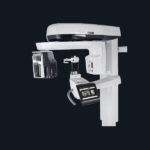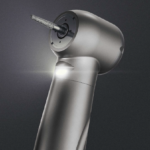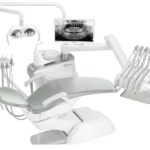
An Electroencephalogram or EEG test helps to measure electrical activity in the brain that uses small discs, or electrodes that the doctor attaches to the scalp.
Brain cells tend to communicate via electrical impulses and are active all the time, even during sleep.
This activity shows up as waves on the EEG recording.
Moreover, an EEG test is one of the main diagnostic tests for epilepsy.
An EEG can also play an important role in diagnosing other brain disorders.
These can be brain tumors, brain damage from a head injury, or brain dysfunction that can have a number of causes, herpes encephalitis, stroke, sleep disorders, or Creutzfeldt-Jakob disease.
Keep on reading to learn more about EEG tests.
EEG Test
An Electroencephalogram, EEG records activity in the brain. The human brain constantly prodcues tiny electrical signals.
During an EEG test, small sensors or electrodes are placed on the scalp of the person.
These electrodes are connected by wires to an EEG machine.
The technician will attach the electrodes with a special glue or place.
However, when they remove them, the person may still have a lot of glue in the hair, which they can remove with the help of a hair conditioner.
These electrodes pick up the electrical signals from the brain and record them on the computer.

But they do not interfere with the brain of a person and do not cause any pain.
The electrical signals look like wavy lines that show the brainwave patterns.
The EEG test, moreover, can only show the brainwave patterns at the time the technician carries out the test.
At different times, the brainwave patterns may be different.
A highly trained specialist or neurophysiologist will recognize the EEG test which shows a brainwave pattern that is different in most other people.
While some of these patterns can point out a possibility of epilepsy.
Uses of EEG Test
One of the important things to note is that EEGs have been used since 1929 to find problems in the electrical activity of the brain that are associated with certain brain disorders.
The measurement that an EEG test gives can help to confirm or rule out a number of conditions, including:
- seizure disorders like epilepsy
- head injury
- encephalitis or inflammation of the brain
- brain tumor
- encephalopathy or a disease that causes brain dysfunction
- sleep disorders
- stroke
- dementia
Moreover, when someone is in a coma, an EEG test may be performed to find their level of brain activity.
The test can also help to monitor activity during brain surgery.
Learn more about Blood Test: All You Need to Know here.
Are there any Risks associated with an EEG?
It is important to note that an EEG test is usually painless and very safe.
However, if an EEG does not produce any abnormalities, stimuli like strobe lights, or rapid breathing may be added to help induce any abnormality.
When someone has epilepsy or another seizure disorder, there is a small risk that the stimuli that are presented during the test like a flashing light may cause a seizure.
Moreover, the technician performing an EEG is trained to safely manage any situation that may occur.
Hyperventilation is commonly induced during an EEG that helps to produce abnormalities.
While some people may not be able to hyperventilate safely, like people with a history of stroke, asthma, or sickle cell anemia.
Factors that can interfere with an EEG Reading
Different types of movements can potentially cause “artifacts” or an EEG recording that mimics brain waves.
The person responsible for interpreting the EEG with taking these movements into account. These are:
- the pulse and heartbeat
- breathing
- sweating
- mouth movements
- muscle movements
While other factors that can influence the EEG reading are low blood sugar, bright or flashing lights, some medications like sedatives, consuming caffeine, oily hair, or hair spray.
Learn more about Medical Diagnostic Imaging here.
Preparing for EEG Test
Before a person takes this test, they should take the following steps:
Ask the doctor if they should stop taking any medications before the test.
The patient should also make a list of the medications and give it to the technician performing the EEG.
Moreover, the you should wash your hair the night before the test and avoid putting any products like sprays or gels on the day of the test.

They should avoid eating or drinking anything that contains caffeine for at least 8 hours before the test.
The doctor may as the person to sleep as little as possible the night before the test if they have to sleep during the EEG.
They may also be given a sedative to help them relax and sleep before the test begins.
In some cases, however, the doctor may give a sedative to the person during the procedure.
If so, the doctor will ask the person to bring someone who can drive them home afterward.
EEG Procedure
An EEG measures the electrical impulse in the brain using a number of electrodes attached to the scalp.
The electrode is a conductor through which electrical current enters or leaves.
Moreover the electrodes transfer information from the brain of a person to a machine that measures and records the data.
With the help of specialized technicians that administer EEGs at hospitals, the office of the doctor, and laborites, the tests are performed.
The test will usually take roughly 30 to 60 minutes to complete and involves the following steps:
- The person will lie down back in a reclining chair or a bed
- A technician will measure the head of the person and mark where to place the electrodes. The spots can be scrubbed with a special cream that helps the electrodes to get a high-quality reading.
- The technician will put a sticky gel adhesive on 16 to 25 electrodes and attach them to spots on the scalp.

- Once the test begins, the electrodes will send electrical impulse data from the brain to the recording machine
- This machine converts the electrical impulses into the visual patterns that appear on the screen.
- A computer will save these patterns.
- The technician may instruct the patient to do certain things while the test is in progress.
- They may ask the person to lie still, close their eyes, breathe deeply or look at stimuli, which can be a flashing light or a picture
During the test, very little electricity tends to pass between the electrodes and the skin of a person, so they may feel very little to no discomfort.
Moreover, in some instances, a person may undergo a 24-hour EEG.
These EEGs may show abnormalities even if the seizure does not occur during the test.
However, it does not always show past abnormalities that are related to a seizure.
After EEG Test
After the test is complete, the technician will remove the electrodes from the scalp of the person.
They can continue with their routine.
However, if the doctor administers a sedative, the medication with remain in the system of that person for a little while.
This means that they will need to have someone with them to take them home after the test.
Moreover, the person will need to rest and avoid driving until the medication wears off.
Learn more about Hand Held Suction Pump here.
What do the Results Mean?
A neurologist is a person who specializes in nervous system disorders and will interpret the recordings and then send the results to the doctor.
The doctor will then schedule an appointment to go over the test results with the person.
Normal Results
Electrical activity in the brain appears in an EEG as a pattern of waves.
Different levels of consciousness like sleeping and waking tend to have a specific range of frequencies of waves per second that experts consider normal.
For instance, a wave pattern that moves faster is when you are awake than when the person is asleep.
The EEG will show if the frequency of waves or patterns is normal.

Abnormal Results
Abnormal EEG results may be due to the following:
- epilepsy or another seizure disorder
- abnormal bleeding or hemorrhage
- sleep disorder
- encephalitis or swelling of the brain
- tumor
- dead tissue due to blockage of blood flow
- migraine
- excessive alcohol or drug use
- head injury
Moreover, it is important for the person to discuss the test results with the doctor.
Before a person reviews the results, it can be helpful to write down any questions they may have or want to ask.
They should make sure to speak up if there is anything about the results that they do not understand.
Final Thoughts
An EEG is a test that measures brain waves and helps the doctor detect abnormal brain activity. The results of an EEG can be used to rule out or confirm conditions like epilepsy, a brain tumor, or a stroke.
It is important to note that EEGs are generally safe and painless, however, there is a small risk of having a seizure during the test if the person has epilepsy and flashing lights are used during th test.
Therefore, it is important for the patient to let their doctor know if they have had a serious triggered by flashing lights in the past before receiving an EEG.




